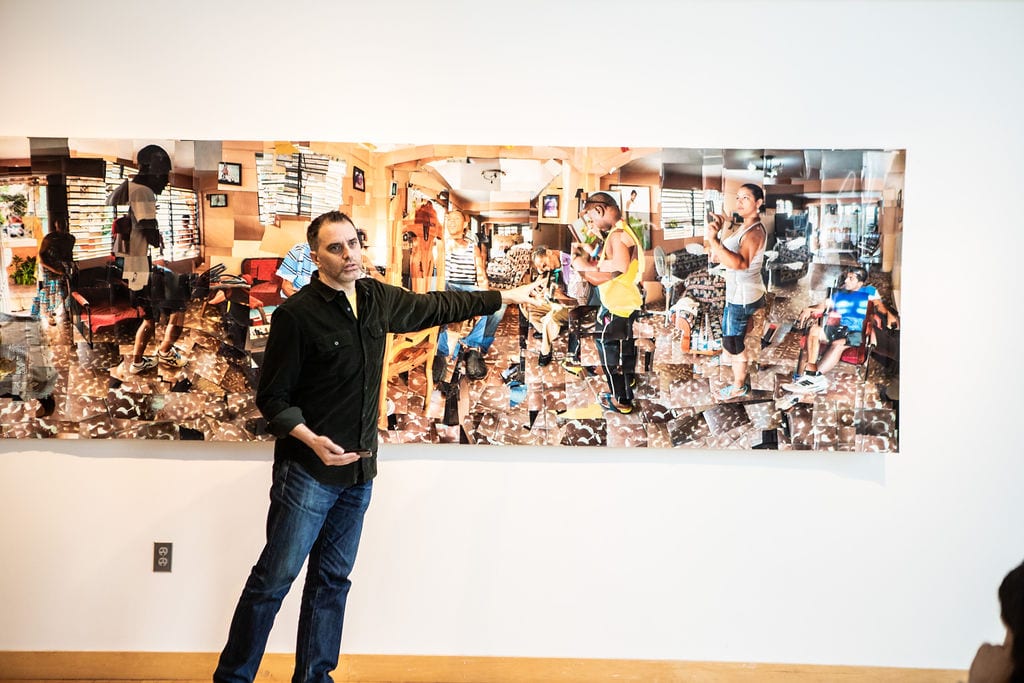Cuban music pulls in influences from divergent places: Spanish immigrants brought guitar and horns, African enslaved people brought and invented multiple varieties of percussion instruments, Chinese immigrants contributed a reed instrument still played in parts of Cuba today. The braiding of these strands creates a musical experience for the ears that has been described as one of the richest in the world.
Mark Guglielmo discussed Cuba’s musical heritage during his visit to Michael Doubleday’s Latin American History class, which met in Williston’s Grubbs Gallery (see photos here), where Guglielmo’s photomosaics have been hanging this fall. He took thousands of photos during multiple trips to Cuba, and upon his return, pasted 4″ x 6″ prints together to make fanciful, fractured images of the island and its inhabitants. He described how he got to know the Cuban people and its culture, not by following a prescribed tourist track, but by finding locals who were willing to show him what they love about their home.
“Here, there are divisions,” he told the students. “There, the message is, ‘We are Cubans.'” The residents have suffered and he said he didn’t want to romanticize their experience, but “people look after each other. The level of suffering was so high. They really had to band together.”
Being cut off from the United States, and feeling the impact of the fall of the Soviet Union, Cubans had no choice but to innovate and made do with what they had. A turquoise 1950s-era car sits on the street in Havana in one of Guglielmo’s scapes. Another shows the home of a local musician where he was invited in; he points out to students a speaker that the man made himself. “There’s no Circuit City there. They know resistors, they know sound. That speaker sounded great and it was powerful.”
On another wall hangs a montage of a woman in her 80s, skin dark and wrinkled, holding a turkey chick. Guglielmo looks joyful as he shares the story of riding by horseback with a guide to her home, two hours away from the city, where she raises the birds. He has collected audio recordings of him interviewing her, and many other Cubans, on his website.
During his six-week Grum Project residency at Williston, funded by a generous alumna, Guglielmo visited language classes, music classes, English classes, dance classes, and photography classes. His visit concluded with a performance by a local four-piece band, Grupo Isla, which played at an all-school assembly. The way he connected these multiple disciplines harkened back to the interplay of musical influences on Cuba, yielding a cultural experience for Williston that enriched the entire student body.

